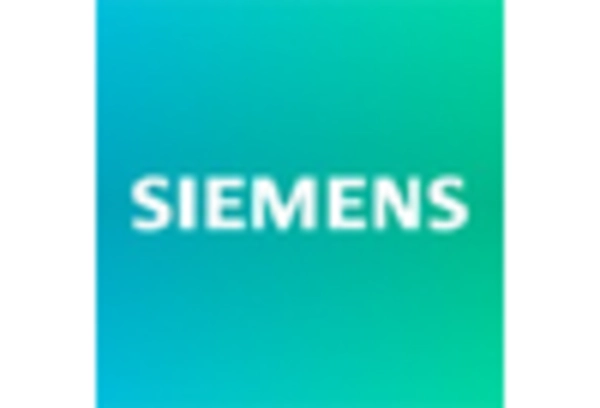Focus on Cybersecurity Measures
The Utility Communications Market is increasingly prioritizing cybersecurity measures in response to the growing threat of cyberattacks. As utilities become more interconnected and reliant on digital communication systems, the potential vulnerabilities also rise. Recent studies indicate that nearly 60% of utility companies have reported experiencing cyber incidents in the past year. Consequently, there is a pressing need for robust cybersecurity frameworks to protect sensitive data and ensure the integrity of communication networks. Investments in advanced security technologies, such as encryption and intrusion detection systems, are expected to surge, with the market for cybersecurity solutions projected to grow by approximately 12% annually. This focus on cybersecurity not only safeguards utility operations but also enhances consumer trust, which is essential for the long-term sustainability of the Utility Communications Market.
Adoption of Smart Grid Technologies
The Utility Communications Market is witnessing a significant shift towards the adoption of smart grid technologies. These technologies facilitate two-way communication between utilities and consumers, enabling better demand response and energy management. The integration of smart grids is projected to enhance operational efficiency and reliability, with market analysts estimating a growth rate of approximately 9% over the next five years. Utilities are increasingly investing in smart meters, advanced metering infrastructure, and automated distribution systems to optimize their operations. This transition not only improves service delivery but also empowers consumers with real-time data regarding their energy usage. As the demand for energy efficiency and sustainability rises, the adoption of smart grid technologies is likely to play a crucial role in shaping the future of the Utility Communications Market.
Rising Demand for Enhanced Customer Engagement
In the Utility Communications Market, there is a growing emphasis on enhancing customer engagement through improved communication channels. Utilities are increasingly recognizing the importance of providing timely and accurate information to their customers. This shift is largely influenced by the rising expectations of consumers for transparency and responsiveness. As a result, many utility companies are investing in customer relationship management (CRM) systems and digital communication platforms. The market for these solutions is anticipated to witness significant growth, with estimates suggesting an increase of over 15% in the next few years. By leveraging these tools, utilities can foster stronger relationships with their customers, ultimately leading to higher satisfaction rates and reduced churn. This trend underscores the critical role of effective communication in the Utility Communications Market, as companies strive to meet the evolving needs of their customer base.
Integration of Advanced Communication Technologies
The Utility Communications Market is experiencing a notable shift towards the integration of advanced communication technologies. This trend is driven by the increasing demand for real-time data transmission and enhanced operational efficiency. Technologies such as 5G, IoT, and AI are being adopted to facilitate seamless communication between utility providers and consumers. The market is projected to grow at a compound annual growth rate of approximately 10% over the next five years, indicating a robust expansion. As utilities seek to modernize their infrastructure, the integration of these technologies is likely to play a pivotal role in enhancing service delivery and reliability. Furthermore, the adoption of smart meters and grid automation is expected to further propel the Utility Communications Market, enabling utilities to optimize resource management and improve customer engagement.
Regulatory Compliance and Sustainability Initiatives
The Utility Communications Market is significantly influenced by regulatory compliance and sustainability initiatives. Governments and regulatory bodies are increasingly mandating utilities to adopt environmentally friendly practices and transparent communication strategies. This regulatory landscape is driving utilities to invest in sustainable communication technologies that minimize environmental impact. For instance, the implementation of smart grid technologies is not only a response to regulatory requirements but also a means to enhance operational efficiency. The market for sustainable utility communication solutions is expected to grow, with projections indicating a rise of around 8% in the coming years. By aligning with regulatory standards and sustainability goals, utilities can improve their public image and foster community support, which is crucial for the long-term viability of the Utility Communications Market.


















Leave a Comment